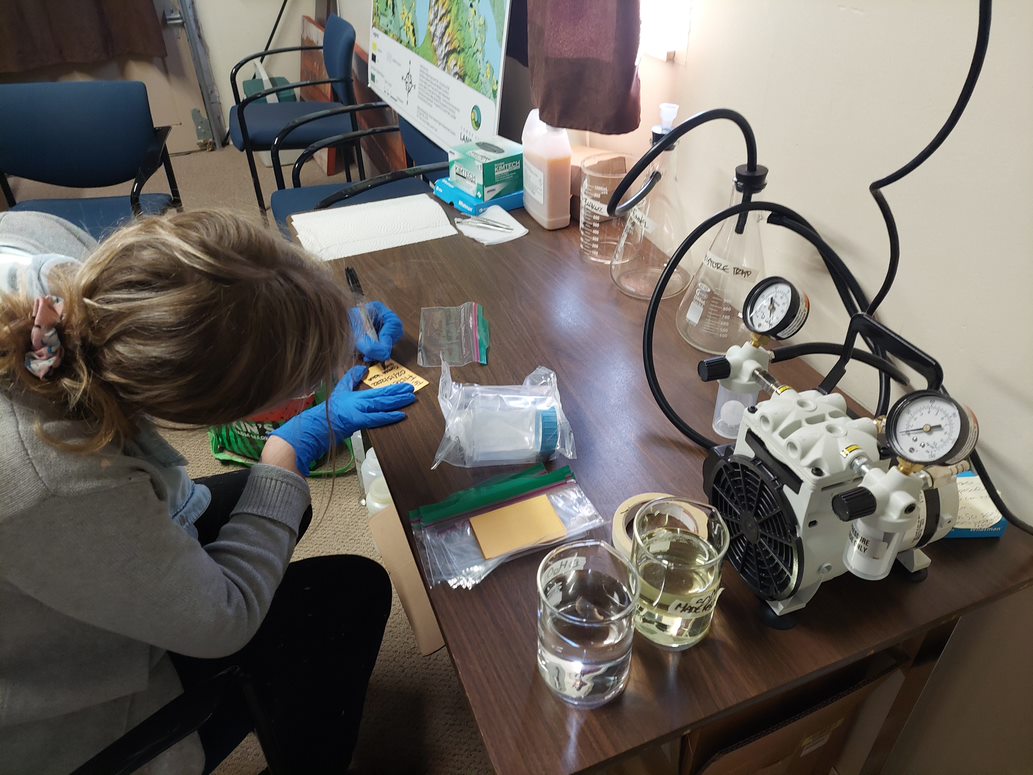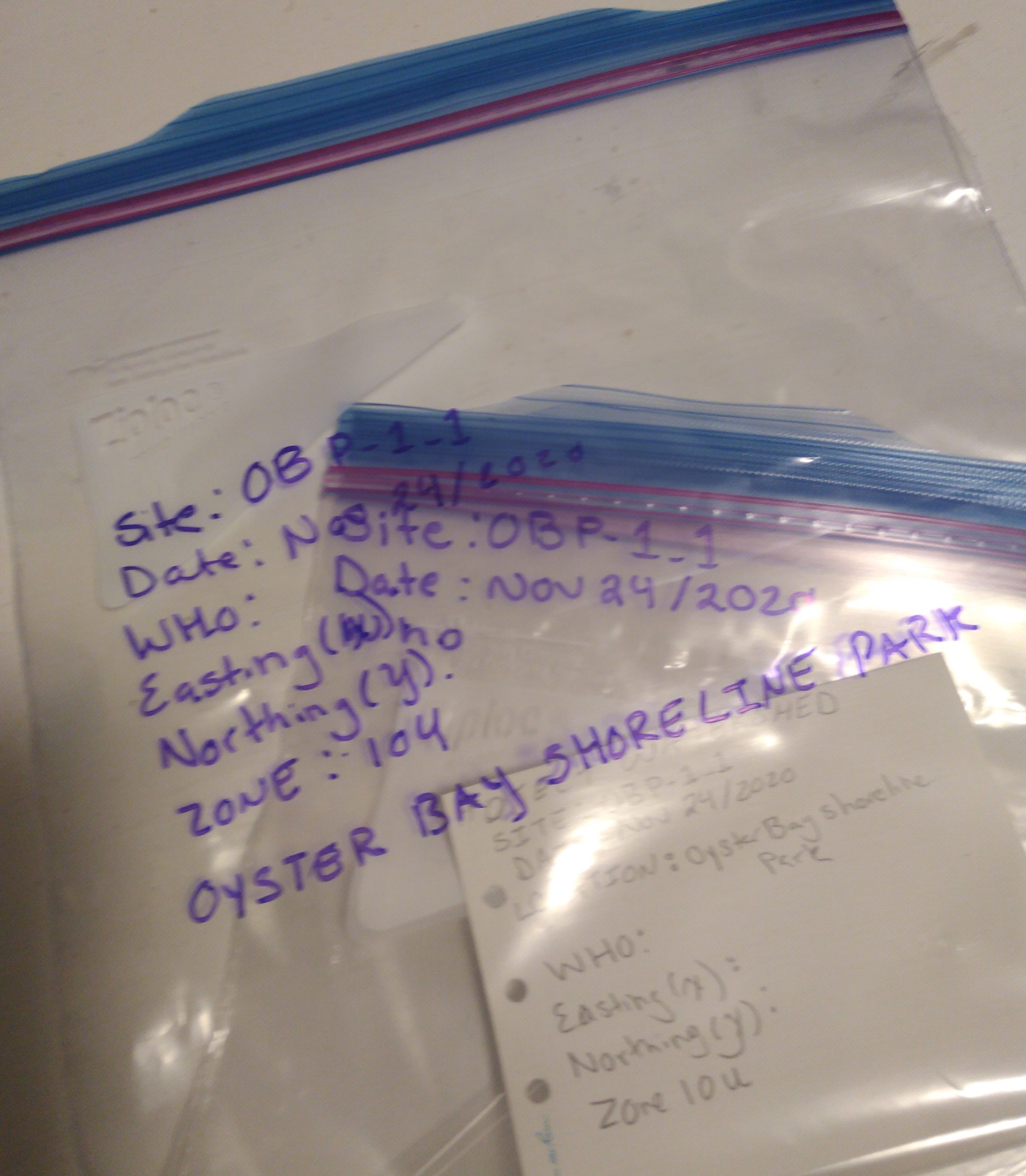New eDNA Research
The article explains how they have developed and validated two assays for environmental DNA (eDNA) and that eDNA sampling is an effective method to detect Pacific sand lance and surf smelt, two local forage fish species, from small sand samples. This is a valuable finding as extensive visual surveys for eggs using large sand samples has been the technique used historically. In addition, visual survey methods only identify the location of eggs and does not assess other intertidal habitat use whereas eDNA sampling can reveal this important information.
Project Watershed has been using eDNA as part of our forage fish sampling since 2019. eDNA is found on beaches and includes fish scales, mucus, and fecal matter. It is a “sterile” sample, meaning best efforts were made to collect sand samples where there was limited disturbance from humans and animals along the 30m sampling transect. Sampling is done at the high tide line of beaches.
eDNA sampling paired with the field methods of collecting a 4L bulk sample, sieving and vortexing the sample, and using a microscope for identification can further verify the habitat that Pacific sand lance and surf smelt are using as well as their timing windows for spawning.
They also found that in eDNA samples where surf smelt was detected, there may be overlapping substrate use between Pacific sand lance and surf smelt. This means that both species may be facing similar habitat conservation concerns.
Do you want to help us find forage fish eggs on beaches around the Comox Valley? Searching for forage fish eggs involves beach surveys and microscope work. You can sign up for both volunteer opportunities or focus on one of the two.
Related Posts
Eelgrass Update
In the fall our restoration team surveyed the three eelgrass beds which were planted with the help of our volunteers back in June. The beds are looking healthy!
Kus-kus-sum: End of Season Wrap-up
Now that we have put the Kus-kus-sum site to bed for the winter, we wanted to give you all a little update on how things progressed this season – lots happened!
Kate McKeown
Meet our new Forage Fish Technician!
Greenshores at Dyke Road Park – Reimagining a Park
On September 20 and 21, over 20 people were on site to help with planting at the Comox Valley Regional District’s (CVRD) Dyke Road Park redevelopment project.
Gartley Beach Green Shores for Homes Project
Project Watershed is teaming up with the CVRD and the Stewardship Centre for BC to do some shoreline restoration at Gartley Beach in Royston.
Fall and Winter Forage Fish Sampling
We’re gearing up for the fall/winter season of forage fish sampling!



